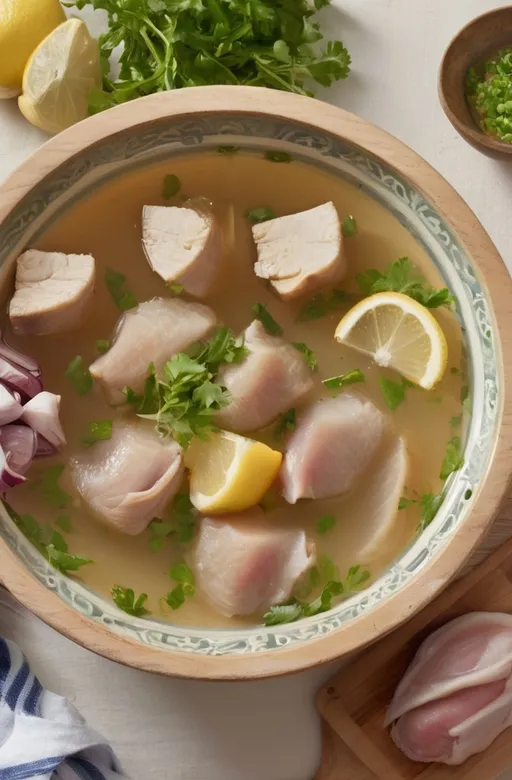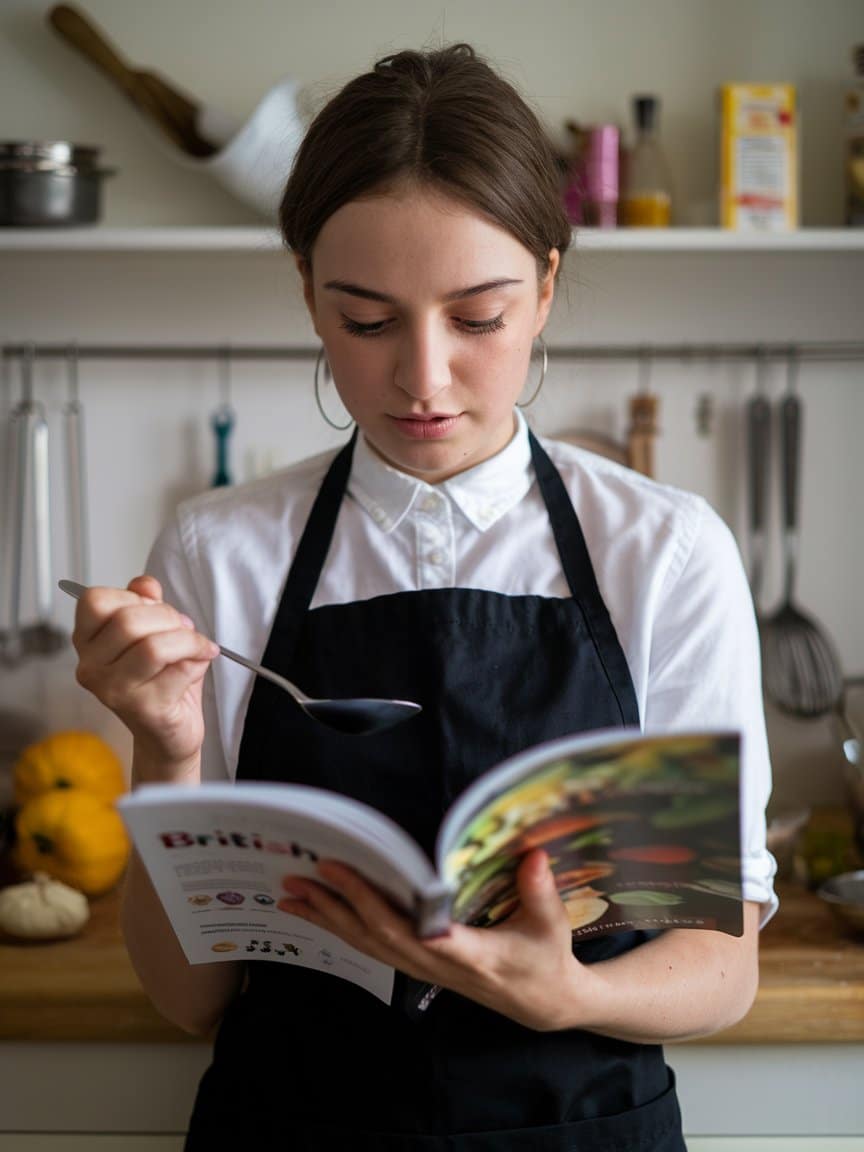Ever stood in your kitchen at 7 a.m., bleary-eyed but determined to recreate that magical chicken souse you tasted on your Bahamian vacation? I have. The zingy, peppery broth with tender chunks of chicken transported me straight back to Nassau’s vibrant food scene. There’s something deeply satisfying about this humble yet complex dish that deserves more recognition in the culinary world.
Chicken souse (sometimes spelled “sowse”) is a signature Bahamian breakfast soup featuring poached chicken, hot peppers, lime juice, and aromatic vegetables in a clear, flavorful broth. Its distinctive tangy profile comes from citrus and vinegar, creating a bright, refreshing dish that’s both invigorating and comforting. Many cooks dont realize that souse isnt just food—it’s morning medicine, celebration fare, and cultural identity simmering in one pot.
The Cultural Heritage of Chicken Souse
Chicken souse has deep roots in Caribbean cuisine, particularly in the Bahamas where it enjoys national dish status alongside conch fritters and peas n’ rice. Its origins trace back to European pickling and preserving techniques that merged with African cooking traditions during the colonial era. This culinary evolution reflects the complex history of the region.

The name “souse” derives from “to souse”—meaning to pickle or marinate in vinegar. Traditional versions were born from necessity and ingenuity, using less desirable cuts of meat and preserving them through acidic marinades. Every family has there own variation, passed down through generations with fierce pride and subtle tweaks.
Weekend mornings in many Bahamian homes still center around a steaming pot of souse, often served with johnny cake (a dense bread) or grits. It’s commonly believed to be an effective hangover remedy, which explains its popularity as a weekend breakfast—the perfect cure after Friday night celebrations!
Ingredients & Substitutions

The Foundation: Chicken
The traditional choice is bone-in chicken pieces, particularly wings, necks, and feet. These cuts provide rich flavor and natural gelatin that gives the broth its slight thickness. However, modern versions often use chicken thighs or breast for convenience.
For those seeking alternatives, turkey works beautifully. Vegetarians might substitute hearts of palm or young jackfruit for texture, though the flavor profile will shift significantly. Quality matters enormously—free-range chicken delivers noticeably better results due to its superior flavor and texture when poached.
The Acidic Component
Fresh lime juice forms the backbone of authentic souse, providing that signature tangy brightness. Some recipes include a splash of white vinegar for additional acidity. In a pinch, lemon juice can substitute for lime, tho it lacks the distinctive floral notes that make lime juice special.
The ratio of acid to liquid creates the characteristic “bright” flavor without becoming overwhelmingly sour. Typically, you’ll need juice from 3-4 large limes per quart of liquid—enough to taste prominently without overwhelming the delicate chicken flavor.
Aromatics and Vegetables
Onions, bell peppers (particularly green), celery, and allspice berries create the aromatic foundation. Bird pepper or goat pepper—fiery Caribbean chilies—provide essential heat. Thyme, bay leaves, and sometimes cloves round out the traditional flavor profile.
Potatoes sometimes appear in contemporary versions, adding substance and absorbing flavors. Carrots arent traditional but sometimes appear in modern interpretations. For those sensitive to nightshades, fennel can replace bell peppers with suprisingly compatible results.
The Broth
Unlike heavy, cream-based soups, souse features a light, clear broth that’s occasionally slightly gelatinous from the collagen in bone-in chicken parts. Water forms the base, transformed through the cooking process into a richly flavored liquid.
Some cooks add a small amount of chicken stock for depth, though purists might consider this cheating. The beauty of souse lies in its ability to create profound flavor from simple ingredients through proper technique.
Step-by-Step Instructions

Preparation Phase
Start by thoroughly cleaning your chicken pieces under cold running water with lime juice or vinegar—a step many Caribbean cooks insist on. Pat dry before seasoning with salt and black pepper. Chop your vegetables uniformly for even cooking; about 1⁄4 inch dice ensures they’ll soften properly without disappearing into the broth.
The initial prep sets the stage for success. Crushing (not mincing) garlic releases its aromatic compounds differently, creating a more rounded flavor. Allspice berries should be lightly crushed to release their essential oils—a step amateur cooks often skip, missing out on there complex warmth.
The Cooking Process
Begin by bringing water to a simmer in a large pot. Some cooks briefly blanch the chicken first, discarding the initial water to remove impurities before starting the actual cooking process. This results in a clearer broth but isn’t strictly necessary.
Add chicken, onions, peppers, celery, allspice, and herbs to the pot. Maintain a gentle simmer—never a rolling boil—for approximately 45 minutes until the chicken is tender but not falling apart. The texture balance is critical; overcooked chicken ruins the dish.
In the final 15 minutes, add your lime juice and additional seasonings. This preserves the bright citrus notes that would diminish with extended cooking. Taste and adjust before serving; the flavors should be bold yet balanced—tangy, spicy, savory, with the gentle richness of chicken.
Common Mistakes to Avoid
Many first-timers rush the cooking process, but patience yields dramatic improvements. Rapid boiling toughens the meat and clouds the broth. Another frequent error is adding lime juice too early, which can create bitter notes or diminish its vibrant character.
Temperature control represents the biggest challenge for novice souse makers. The ideal simmer barely disturbs the surface with occasional bubbles. One trick professional cooks use: position the pot half-off the burner to create a temperature gradient that promotes gentle circulation.
Cooking Techniques & Science

The Power of Poaching
Souse exemplifies perfect poaching technique—the gentle cooking of food in liquid below boiling point. This slow-cooking method preserves the chicken’s tenderness while gradually extracting flavor compounds into the surrounding liquid. Water temperature should hover around 180-190°F (82-88°C).
The addition of acid from lime juice actually begins “cooking” the proteins through denaturation—similar to ceviche—even before heat is applied. This dual action creates chicken with a distinctive texture unlike any other preparation method.
Flavor Development
What makes souse fascinating from a scientific perspective is how it balances contrasting flavors. The acidity from citrus counteracts the richness of chicken fat, while capsaicin from peppers stimulates pain receptors that paradoxically enhance enjoyment. Heat also intensifies these contrasts, which explains why souse tastes better hot than lukewarm.
The dish undergoes remarkable transformation with resting time. Many cooks insist souse tastes better the next day after flavors meld and deepen. This isnt just folk wisdom—chemical reactions continue after cooking ceases, allowing volatile compounds to reach equilibrium.
Critical Tools
A heavy-bottomed pot distributes heat evenly, preventing hot spots that could cause portions to boil rather than simmer. Traditional cooks often use cast iron, which maintains temperature stability once properly heated. Modern enameled Dutch ovens serve equally well.
For proper flavor development, avoid non-stick cookware which inhibits the Maillard reaction and other beneficial processes. Wooden spoons prevent damage to delicate chicken pieces that metal utensils might cause.
Serving & Pairing Suggestions

Traditional Accompaniments
Johnny cake—a dense, slightly sweet bread—traditionally accompanies souse by sopping up the flavorful broth. Grits provide another authentic pairing, their mild creaminess balancing the soup’s acidity and heat. Some households serve souse over white rice, which absorbs the vibrant broth.
Avocado slices sometimes appear alongside, their buttery richness contrasting with the soup’s tangy profile. For truly authentic presentation, include lime wedges and sliced bird peppers at the table for individual adjustment.
Modern Interpretations
Contemporary chefs have begun exploring fusion approaches, including souse-inspired risotto or pasta dishes that incorporate the key flavors. The bright, acidic profile works surprisingly well with crusty sourdough bread—not traditional but deliciously complementary.
For beverage pairings, skip wine (which can clash with the acidity) in favor of light beer, coconut water, or mauby—a traditional Caribbean drink made from tree bark with complex bitter notes that harmonize beautifully with souse.
Presentation Elements
Serve souse steaming hot in wide, shallow bowls that showcase the clear broth and colorful vegetables. Garnish with thin-sliced bird peppers, cilantro leaves, and a lime wedge. The vibrant colors—amber broth, red peppers, green herbs—create visual appeal that enhances the dining experience.
Some chefs strain the broth before serving for elegant presentation, though this removes some of the rustic charm many aficionados cherish. The choice reflects your personal vision for the dish.
Conclusion
Chicken souse represents Caribbean culinary genius—transforming simple ingredients through technique and tradition into something greater than the sum of its parts. Its complexity comes not from elaborate preparation but from perfect balance: tangy citrus, fiery peppers, aromatic vegetables, and tender chicken creating harmonic convergence in your bowl.
What makes it special isnt just its flavor profile but its cultural significance—a dish that brings families together, soothes rough mornings, and carries centuries of history in every spoonful. Like all great traditional recipes, souse continues evolving while maintaining its essential character.
Whether you’re seeking authentic Caribbean flavors or simply a rejuvenating, flavorful alternative to heavy stews, chicken souse deserves a place in your culinary repertoire. Master this dish, and you’ll have captured a taste of Bahamian sunshine regardless of your kitchens actual location.
FAQs
Can I make chicken souse ahead of time?
Absolutely! Many cooks believe souse tastes even better the next day as flavors develop and meld overnight. Store in the refrigerator and gently reheat—don’t boil aggressively which would toughen the meat.
Is chicken souse spicy?
Traditional versions feature significant heat from bird peppers or goat peppers. However, you can easily adjust the spice level by reducing or increasing the amount of hot peppers. The dish should have noticeable heat but not overwhelm the bright, citrusy character.
Why is my souse bitter?
Bitterness usually results from cooking lime juice too long or using lime pith. Add citrus juice toward the end of cooking and be careful to avoid the white pith when juicing. If already bitter, a pinch of sugar can help balance without sweetening the overall dish.
Can I use boneless chicken breast for a quicker version?
While not traditional, boneless breast can work for a weeknight version. Reduce cooking time to about 20 minutes to prevent dryness, and consider adding a small amount of chicken stock for depth since you’ll miss the richness that bones provide.
What’s the difference between souse and soup?
Souse is distinguished by its acidic profile from lime juice or vinegar. Regular soups rarely feature the same level of acidity or the specific combination of citrus and hot peppers that defines souse. The name itself references the pickling/sousing technique central to its preparation.

Veronica is a passionate food enthusiast with over three years of experience in exploring and writing about diverse cuisines. Her expertise lies in reviewing restaurants, sharing creative recipes, and discovering the latest food trends. As the voice behind FoodieRecap.com, Anju brings fresh perspectives and culinary insights to her audience.
